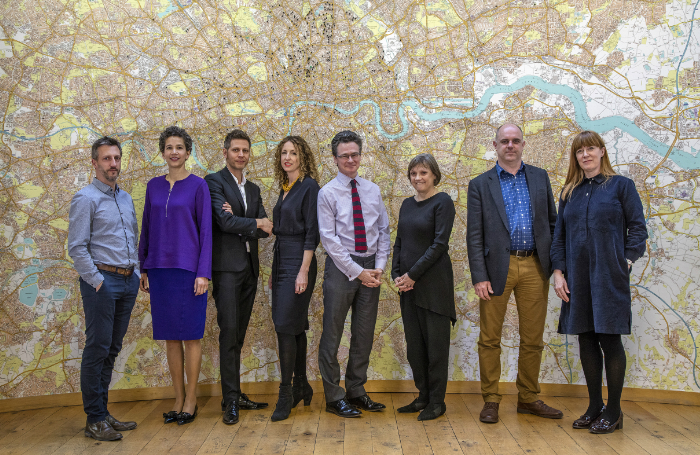The struggle to secure votes for women may have been won 100 years ago this week, but the campaign to secure equality of opportunity for women in architecture remains a work in progress. Women make up barely a quarter of registered architects in the UK. Increasing the number of women in senior management is key to change.
When Teresa Borsuk, Senior Partner at housing experts Pollard Thomas Edwards (PTE), was awarded AJ Woman Architect of the Year in 2015, it was in recognition of her ‘'remarkable' contribution to improving equality within her practice’. On her watch, the number of women on the staff had grown to more than 50 per cent – a compelling case for the power of an influential and supportive role model.
To inspire leadership among women, the RIBA is holding a Women Leaders Speed-Mentoring Evening as part of the Future Leaders event on 22 March at the RIBA. Aimed at women delegates, it will provide the opportunity to meet with senior women from across the design and construction industry. More than 30 mentors will be passing on guidance and encouragement.
Confirmed mentors for the event include: Sarah Castle, co-founder of IF_DO; Helen Logan, Partner at Allies and Morrison; and Jo Wright, Group Leader at Arup Architecture UK.

Teresa Borsuk will also be a speed-mentor and speaking at the ‘Learning to Lead’ Future Leaders seminar in the afternoon on the subject of ‘Future: Strategy, Planning and Vision’, alongside past winner of Woman Architect of the Year award Alison Brooks, who will be delivering a master class in engaging with individuals, teams and clients.
Borsuk is clear on how pressing the need for transformation is in practice:
‘It is obvious, is it not? Perceptions need to change. There are no magic formulae, no silver bullets or quick fixes. We need to change the dominant business model. We should be aiming for a gender neutral business model. We need to create an ethos that will help to retain women in the profession,’ she argues.
‘The outcome will be more women in senior and leadership positions. In a position of leadership, you can help to promote women – you are automatically a role model. Women in leadership will beget more women in leadership.’
Borsuk herself settled on a career as an architect by the age of eight, although this was somewhat diverted when her ambition was translated into ‘interior design’ at her all-girl convent school. It was only at the Bartlett that she began to get a clear steer on what architecture might be and resolved to study further.
After the Bartlett and an additional scholarship year at Kansas University, Borsuk returned to England to find a placement alongside 500 men on Seifert’s Nat West Tower (now Tower 42) and a first job, sponsored by the RIBA, as a Site Supervising Officer.
A London practice followed, where Borsuk has no doubt that she experienced resistance to her gender, with every day seeming to present a fresh challenge. ‘One day I resolved that I didn’t have to put up with it anymore, and began to look for a new job,’ she recalls.
In the mid-eighties, the founding partners at PTE ‘recognised that since we spend so much time at work it should be an enjoyable place to be. To them, a balanced workplace and work force was not different or special, it simply reflected real life. It made smart business sense.’ Borsuk did not look back, becoming an associate, director, partner and now senior partner.
Within the profession, though, 30 years later, Teresa remains an exception, as a chartered architect and senior leader (only 1 in 5 chartered architects are women), despite the number of women architecture students growing to almost 50%.
‘Evidently women leave the profession in droves. Why do they do that?’ poses Borsuk.
‘It is evidently not because they are not able or competent or are unambitious. Ultimately, they opt out, generally a voluntary decision, because of a number of barriers. Statistics show that many women leave when they have children. The combination of work and domestic responsibilities can weigh heavily.
‘Historically, the conventional architectural business model presupposes a linear career path – with little tolerance for a career break. There was often a stigma for taking a break from architecture. The business model also equates leadership with unfailing availability – the expectation of “anytime, anywhere” – whereas working part-time, because you are caring for children, can be regarded as a career breaker.’
Borsuk has no doubt that there are clear business advantages for practices that accommodate part-time and flexible working, and many practices have shown that it is perfectly possible for both men and women architects to work part-time/flexibly and make a serious contribution and have a fulfilling career.
‘I see a great future for women in architecture. In the UK we are proud to have three women RIBA presidents and female Stirling and Pritzker Prize winners. We have great role models,’ says Borsuk.
Her advice to young women entering the profession: ‘Believe in yourself. The profession needs you. Keep your foot on the pedal.’
As part of the RIBA’s celebration of International Women’s Day 2018, several events are being held that champion gender diversity and showcase women’s achievements in architecture. Together we can #PressforProgress.
- Inspirational Event – Women in Architecture: 6 March
- Improving Gender Diversity in Architecture: 6 March (details TBC)
- London region International Women’s Day Event: 8 March (details TBC)
Thanks to Teresa Borsuk, Senior Partner, PTE.
Text by Neal Morris. This is a Professional Feature edited by the RIBA Practice team. Send us your feedback and ideas
RIBA Core Curriculum Topic: Business, clients and services.
As part of the flexible RIBA CPD programme, Professional Features, edited by the Practice team, counts as microlearning. See further information on the updated RIBA CPD Core Curriculum and on fulfilling your CPD requirements as an RIBA Chartered Member.
Posted on 8 February 2018.









